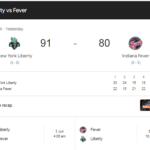The Science Behind 20/4 Intermittent Fasting for Weight Loss: A Personal Account of One Month’s Progress
I. Introduction

Among its various methods, the 20/4 Intermittent Fasting stands out for its unique fasting and eating window ratio. In this article, we delve into the science behind this approach and explore a personal account of one month’s progress.
II. Understanding 20/4 Intermittent Fasting
20/4 Intermittent Fasting involves fasting for 20 hours and consuming all daily calories within a 4-hour window. Unlike other IF methods with shorter fasting periods, this ratio allows for longer periods of fasting, which may lead to distinct metabolic and physiological changes.
III. The Science Behind 20/4 Intermittent Fasting
A. Impact on metabolism
During the fasting period, the body shifts from utilizing glucose for energy to burning stored fat through a process called ketosis. This metabolic state promotes fat loss and may enhance overall metabolic health.
B. Hormonal changes during fasting
Fasting triggers hormonal responses, including increased secretion of norepinephrine and growth hormone. These hormones play a role in fat metabolism, muscle preservation, and cellular repair.
C. Influence on insulin sensitivity
Intermittent fasting has been shown to improve insulin sensitivity, reducing the risk of insulin resistance and type 2 diabetes. By allowing periods of rest for the pancreas, fasting helps regulate blood sugar levels more effectively.
D. Research studies supporting its efficacy
Numerous studies have demonstrated the effectiveness of intermittent fasting for weight loss, metabolic health, and longevity. Research indicates that 20/4 Intermittent Fasting may offer similar benefits while providing a sustainable approach for many individuals.
IV. Getting Started with 20/4 Intermittent Fasting

A. Consultation with healthcare provider
Before embarking on any fasting regimen, it’s crucial to consult with a healthcare provider, especially for individuals with underlying health conditions or dietary restrictions.
B. Establishing a meal plan
Plan meals rich in nutrients and balanced in macronutrients to support overall health and energy levels during the eating window.
C. Tips for transitioning into the fasting window
Gradually extend fasting periods to allow the body to adapt. Start with shorter fasting durations and gradually increase to 20 hours.
D. Common challenges and how to overcome them
Common challenges include hunger, fatigue, and cravings, especially during the initial phases. Strategies such as staying hydrated, consuming adequate electrolytes, and distracting oneself during fasting periods can help mitigate these challenges.
V. Benefits of 20/4 Intermittent Fasting

A. Weight loss and fat burning
By promoting fat metabolism and reducing calorie intake, 20/4 Intermittent Fasting can lead to significant weight loss and fat loss over time.
B. Improved insulin sensitivity
Enhanced insulin sensitivity can lead to better blood sugar control, reduced risk of type 2 diabetes, and improved overall metabolic health.
C. Enhanced mental clarity and focus
Some individuals report improved cognitive function, mental clarity, and focus during fasting periods, attributed to increased production of ketones and neurotrophic factors.
D. Potential longevity benefits
Intermittent fasting has been associated with longevity-promoting effects, including cellular repair mechanisms and reduced inflammation, though more research is needed in humans.
VI. Personal Account: One Month’s Progress
A. Initial expectations and motivations
Share personal motivations for trying 20/4 Intermittent Fasting, such as weight loss goals, health concerns, or curiosity about its effects.
B. Daily routine during the fasting period
Describe a typical day’s fasting routine, including when the fasting period begins, strategies for managing hunger, and activities engaged in during fasting hours.
C. Tracking progress: weight, body composition, and other metrics
Document changes in weight, body composition, energy levels, and overall well-being throughout the fasting journey.
D. Observations and insights
Share personal observations, challenges faced, and insights gained from one month of following the 20/4 Intermittent Fasting protocol.
VII. Meal Planning and Nutritional Considerations
A. Importance of nutrient-dense foods
Emphasize the importance of consuming whole, nutrient-dense foods to meet daily nutrient requirements and support overall health.
B. Balancing macros within the eating window
Focus on including adequate protein, healthy fats, and complex carbohydrates in meals to optimize satiety, energy levels, and muscle preservation.
C. Sample meal ideas and recipes
Provide examples of meals and snacks suitable for the eating window, including nutrient-dense options like lean proteins, leafy greens, healthy fats, and fiber-rich carbohydrates.
D. Hydration strategies
Stay hydrated by drinking water, herbal teas, and other non-caloric beverages throughout the fasting and eating windows to support hydration and overall health.
VIII. Exercise and Physical Activity
A. Exercising in the fasting state
Discuss the benefits and considerations of exercising during the fasting period, including potential effects on performance, fat metabolism, and muscle preservation.
B. Best workout routines for 20/4 Intermittent Fasting
Recommend incorporating a mix of cardiovascular exercise, strength training, and flexibility exercises to support overall fitness goals.
C. Timing exercise around eating windows
Optimize exercise timing based on individual preferences, energy levels, and workout intensity, ensuring adequate fueling before and after workouts.
D. Rest and recovery strategies
Highlight the importance of rest and recovery for optimizing performance, reducing the risk of injury, and supporting overall well-being during intermittent fasting.
IX. Psychological and Emotional Well-being
A. Mindset shift: reframing hunger and cravings
Encourage a positive mindset towards hunger and cravings, viewing them as signals of metabolic changes and opportunities for growth rather than obstacles.
B. Managing social situations and dining out
Offer tips for navigating social gatherings, dining out, and other occasions while adhering to fasting protocols, including communication with friends and family.
C. Addressing emotional eating habits
Explore strategies for recognizing and addressing emotional eating patterns, such as mindfulness practices, journaling, and seeking support from peers or professionals.
D. Self-care practices to support fasting journey
Promote self-care activities, such as meditation, relaxation techniques, adequate sleep, and stress management, to enhance overall well-being during the fasting journey.
X. Overcoming Plateaus and Adjusting the Approach
A. Understanding weight loss plateaus
Explain common reasons for weight loss plateaus during intermittent fasting, including metabolic adaptations, calorie intake, and lifestyle factors.
B. Strategies for breaking through plateaus
Provide actionable strategies for overcoming plateaus, such as adjusting fasting duration, incorporating variety in meals, and increasing physical activity levels.
C. When to consider adjustments to fasting schedule or duration
Discuss signs indicating the need for adjustments to fasting schedules, such as persistent plateaus, changes in energy levels, or shifts in hunger cues.
XI. FAQs (Frequently Asked Questions)
Address common questions and concerns related to 20/4 Intermittent Fasting, providing evidence-based answers and practical guidance for readers.
A. During the fasting period, it’s essential to stick to non-caloric beverages such as water, herbal tea, or black coffee. Consuming zero-calorie drinks helps maintain hydration and may help suppress hunger pangs without breaking the fast.
B. Contrary to common misconceptions, fasting typically does not slow down metabolism. In fact, intermittent fasting may enhance metabolic function by promoting fat burning and improving insulin sensitivity. However, individual responses to fasting can vary, so it’s essential to monitor energy levels and overall well-being.
C. Yes, you can exercise during the fasting window. Many individuals find that engaging in physical activity while fasting can enhance fat burning and metabolic efficiency. However, listen to your body and adjust the intensity and duration of your workouts accordingly.
D. The timeline for seeing results with 20/4 Intermittent Fasting can vary from person to person. Some individuals may notice changes in weight, energy levels, and overall well-being within the first few weeks, while others may take longer to experience significant changes. Consistency and adherence to the fasting protocol are key factors in achieving desired results.
E. While intermittent fasting can be beneficial for many individuals, it may not be suitable for everyone. Individuals with certain medical conditions, pregnant or breastfeeding women, and those with a history of eating disorders should consult with a healthcare professional before starting any fasting regimen.
F. You can gauge if you’re fasting correctly by paying attention to your body’s hunger cues, energy levels, and overall well-being. Signs that you’re fasting correctly may include stable energy levels, improved mental clarity, and gradual progress towards your health and weight loss goals.
G. Yes, you can drink black coffee or unsweetened tea during the fasting period. These beverages are low in calories and do not typically spike insulin levels, making them suitable options to help curb hunger and enhance focus during fasting hours.
H. When done correctly, fasting is unlikely to cause muscle loss, especially if coupled with adequate protein intake and resistance training. In fact, intermittent fasting may preserve lean muscle mass while promoting fat loss.
I. To prevent overeating during the eating window, focus on consuming nutrient-dense, satisfying meals that include a balance of protein, healthy fats, and fiber-rich carbohydrates. Practice mindful eating, listen to your body’s hunger and fullness cues, and avoid eating beyond satiety.
J. If you feel lightheaded or dizzy during fasting, it’s essential to listen to your body and break your fast if necessary. Drink water, consume electrolytes, and rest until symptoms subside. If symptoms persist or worsen, consult with a healthcare professional.
K. Yes, you can still enjoy social events and gatherings while fasting. Plan ahead by choosing low-calorie options or sticking to beverages during fasting hours. Focus on socializing and enjoying the company of others rather than solely focusing on food.
L. While supplements are not necessary for intermittent fasting, some individuals may choose to take certain vitamins or minerals to support overall health. Consult with a healthcare professional to determine if supplements are appropriate for your specific needs and fasting regimen.
M. The long-term effects of 20/4 Intermittent Fasting may include sustained weight loss, improved metabolic health, enhanced insulin sensitivity, and potential longevity benefits. However, individual experiences can vary, and more research is needed to fully understand the long-term effects of intermittent fasting.
N. Intermittent fasting may affect sleep patterns in some individuals, particularly if fasting periods coincide with bedtime. Experiment with different fasting schedules to find what works best for your sleep quality and overall well-being.
O. Maintaining a fasting routine while traveling can be challenging but manageable with proper planning. Pack nutrient-dense snacks, stay hydrated, and adapt your fasting schedule to accommodate travel and time zone changes as needed.
P. Fluctuations in energy levels are common during fasting, especially during the initial adjustment period. These fluctuations may be due to changes in metabolic processes and energy availability. Listen to your body, stay hydrated, and prioritize adequate rest to manage energy levels during fasting.
Q. It is generally not recommended to practice 20/4 Intermittent Fasting while pregnant or breastfeeding, as it may not provide sufficient nutrients for maternal and fetal health. Consult with a healthcare professional for personalized guidance on nutrition and fasting during pregnancy and lactation.
R. To prevent feeling hungry during the fasting period, focus on staying hydrated, consuming zero-calorie beverages, and keeping busy with activities to distract from hunger pangs. Over time, the body may adapt to fasting, and hunger sensations may become less pronounced.
S. Intermittent fasting may offer potential benefits for medical conditions like diabetes or high blood pressure by improving insulin sensitivity, promoting weight loss, and reducing inflammation. However, individuals with these conditions should consult with a healthcare professional before starting any fasting regimen to ensure safety and effectiveness.
T. If you’re not seeing the results you expected with fasting, reassess your approach, including meal timing, food choices, and adherence to the fasting protocol. Consider consulting with a healthcare professional or registered dietitian for personalized guidance and support in achieving your health goals.
XII. Conclusion
In conclusion, 20/4 Intermittent Fasting offers a scientifically supported approach to weight loss, metabolic health, and overall well-being. By understanding its principles, implementing personalized strategies, and seeking guidance when needed, individuals can embark on a journey towards improved health and vitality. Start your intermittent fasting journey today and discover the transformative potential it holds for your health and lifestyle.












1 thought on “Science Behind 20/4 Intermittent Fasting for Weight Loss”